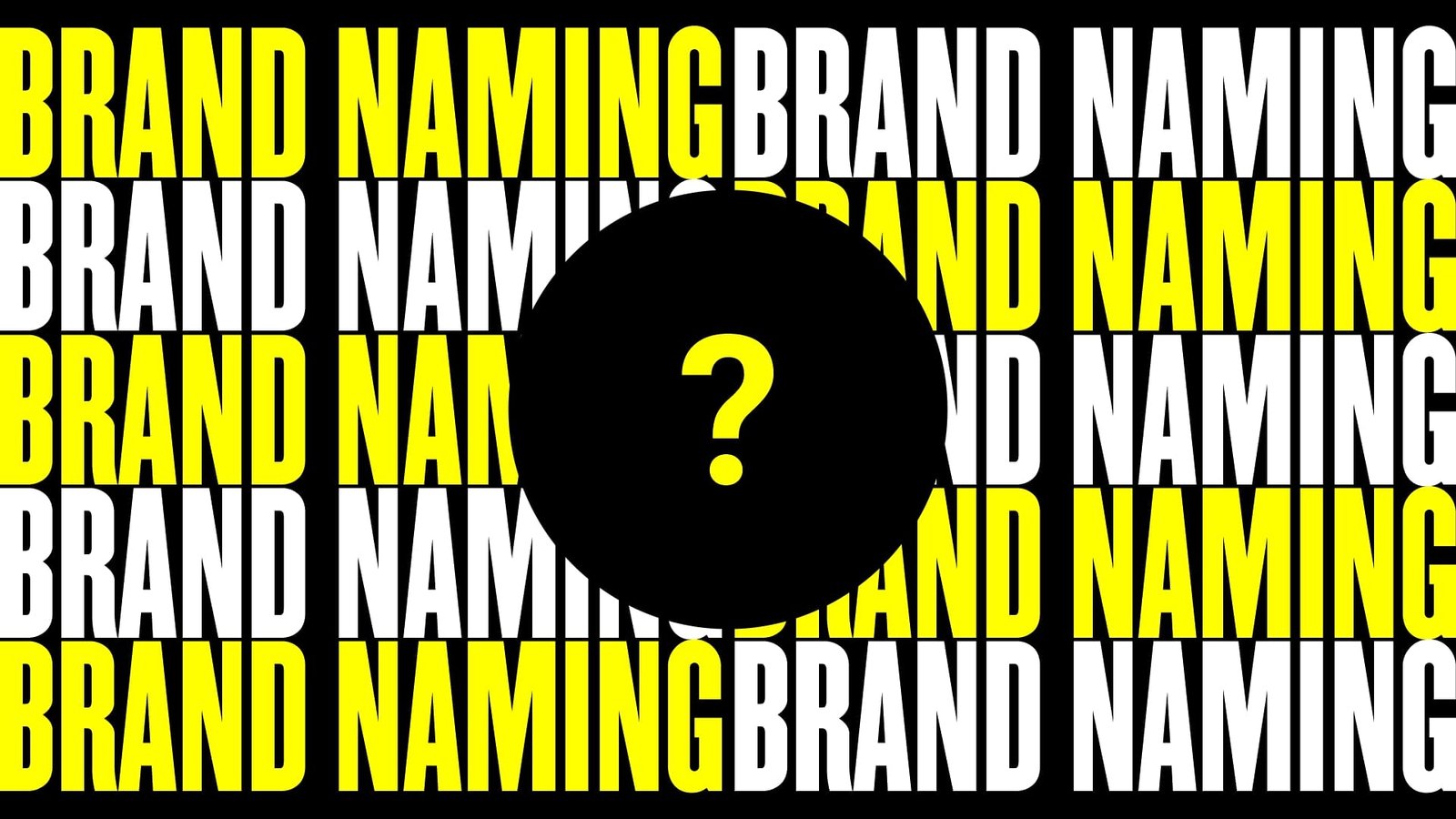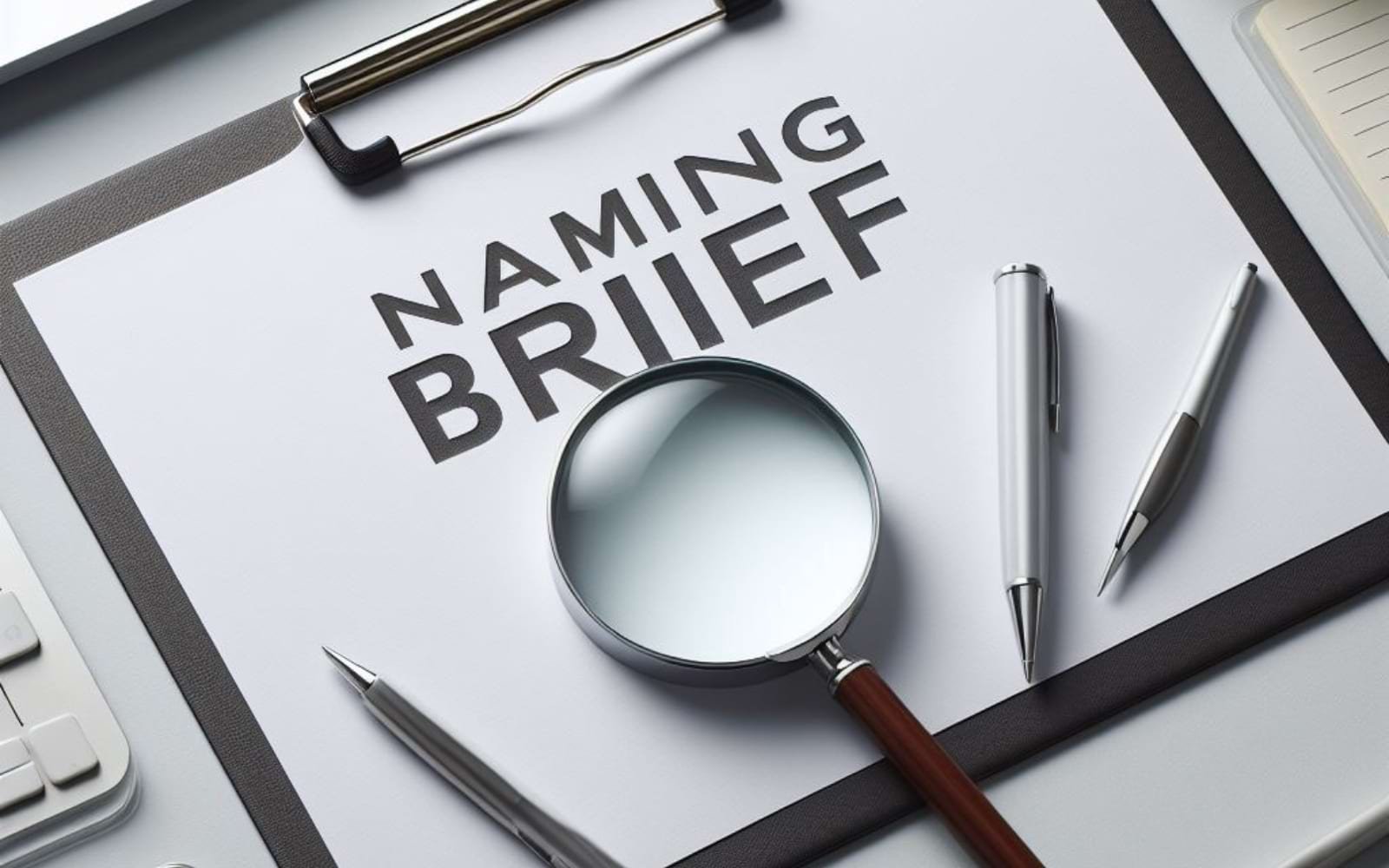Branding
Brand Naming: The Ultimate Guide to Creating Memorable Names for Startups and Businesses
09.02.2025
By Shaikh Asif

Branding
09.02.2025
By Shaikh Asif
A brand name is more than just a label; it is the essence of your business identity. A compelling brand name can evoke emotions, convey values, and distinguish you in a crowded marketplace. For startups and entrepreneurs, choosing the right name is crucial—it sets the foundation for your brand's perception and success.
Are you a business owner looking to create a strong and memorable brand name? Look no further! In this step-by-step guide, we’ll walk you through the process of selecting the right name for your business. Whether you’re starting a new venture or rebranding an existing one, follow these guidelines to ensure your business name resonates with your audience and leaves a lasting impression.
The naming brief is a critical starting point for the brand naming process. It serves as the blueprint that guides the entire naming journey, ensuring that all efforts are aligned with the brand’s strategic goals.
How can one create an effective naming brief?

While there’s no one-size-fits-all process, each agency brings its unique approach to the table. At alitstar, we kick off the naming journey by meticulously constructing a comprehensive brand strategy.
When embarking on the journey of building a brand, whether for a new business or a rebranding effort, the compass guiding your path is none other than a comprehensive brand strategy. This strategic foundation serves as the bedrock upon which all other brand elements are built. Let’s delve into why this process is crucial and how it sets the stage for success.
Holistic Examination: The workshop allows us to dissect the business from the inside out. We explore its core purpose, values, and long-term goals. By involving various perspectives, we gain a 360-degree view of the organization.
Business Objectives: What are you aiming to achieve? Increased market share? Enhanced customer loyalty? The brand strategy workshop helps crystallize these objectives, ensuring alignment with the brand’s mission.
Market Positioning: Establish how you want your brand to be perceived in the market. What makes your brand unique? What are your key differentiators compared to competitors?
Audience Insights: Who are your ideal customers? What motivates them? Understanding your audience deeply informs your brand’s messaging and positioning.
The naming brief is crucial as it lays the foundation for the entire process. Here’s what our brief for the Non-Profit Hospital included:
Objectives:
Establish a name that embodies compassion, hope, and holistic healing.
Communicate a commitment to improving the lives of underserved communities.
Evoke a sense of trust and empowerment.
Target Audience:
Primary: Underserved communities and individuals in need of comprehensive healthcare.
Secondary: Healthcare professionals, donors, volunteers, and community partners.
Market Positioning:
Differentiate the hospital from other healthcare providers by highlighting its holistic and compassionate care approach.
Position as a community-centered haven of support and healing.
Research involves utilizing the developed brand strategy for making strategic decisions. Our main focus is on researching the industry, target audience, and competitors, as all elements of brand strategy are important. Conducting thorough research is essential to ground your creative process in reality and avoid potential pitfalls.
Industry Analysis: Understand the naming conventions and trends within your industry. Identify common themes, tones, and structures used by successful brands.
Competitor Research: Analyze the names of competitors to identify gaps and opportunities. Ensure your name stands out and doesn’t infringe on existing trademarks.
Linguistic Considerations: Check how the name translates across different languages and cultures. Avoid names that have negative or unintended meanings in other languages.
Questions to Ask:
What emotions should the brand name evoke in your target audience?
How does the name reflect your brand values and mission?
What are the key attributes you want your audience to associate with your brand?
Here what we found our research
Industry Analysis: Examined the naming conventions of existing non-profit hospitals and healthcare organizations to identify common themes and gaps.
Competitor Analysis: Identified names of local and national competitors, noting which ones strongly conveyed their mission and values.
Linguistic Considerations: Ensured the name would be easy to pronounce, remember, and have positive connotations in the target community’s languages.
With the brief and research in hand, we held brainstorming sessions involving key stakeholders and creative team members. Brainstorming is where creativity flows freely. The goal is to generate a large pool of potential names without judgment. The goal was to generate a wide array of potential names that reflected the hospital’s essence and positioning.
Mind Mapping: Start with central themes related to your brand and branch out into related words and ideas. This can help uncover unexpected connections.
Free Association: Write down any words or phrases that come to mind. Don’t filter or judge the ideas at this stage; the goal is to generate as many options as possible.
Group Sessions: Involve team members and stakeholders in brainstorming sessions. Diverse perspectives can lead to more innovative ideas.
Expand your list by exploring various linguistic and creative techniques:
Portmanteaus: Combine two words to create a new one (e.g., "Netflix" from "internet" and "flicks").
Neologisms: Invent entirely new words that are unique and memorable (e.g., "Kodak").
Acronyms: Use the initials of a phrase or set of words (e.g., "NASA" for National Aeronautics and Space Administration).
Alliteration and Rhyming: Create names that are catchy and easy to remember (e.g., "Coca-Cola").
Behold, our rough canvas—a tapestry woven with threads of imagination, curiosity, and boundless potential. We stand at the crossroads of creativity, where time bends and rules blur. Brace yourself, for we embark on a voyage through uncharted realms—the birthplace of innovation.
Linguistic Techniques: Played with combinations of words that evoke emotions of hope, care, and community.
Symbolic Imagery: Explored names that symbolizes healing and support, such as “sanctuary,” “beacon,” and “haven.”
Word Association: Used tools and exercises to find synonyms and related terms that aligned with the hospital’s mission.
Evaluate the brainstormed names against the criteria established in your naming brief. This helps to filter out names that don’t align with your brand’s strategic goals.
Relevance: Does the name align with your brand’s values, mission, and vision?
Memorability: Is the name easy to remember and pronounce? Will it stick in the minds of your target audience?
Scalability: Will the name grow with your brand? Can it adapt to new products, services, or markets?
Alignment with Naming Brief: Assessed each name against the objectives, target audience, and market positioning outlined in the brief.
Brand Essence: Ensured the names resonated with the core purpose, vision, and values of the hospital.
Emotional Resonance: Evaluated the emotional impact of each name on potential patients and stakeholders.
Gathering feedback is crucial for refining your list of names. This can be done through:
Surveys: Collect responses from a broad audience to gauge reactions to different names.
Focus Groups: Conduct in-depth discussions with a select group of people to understand their perceptions and preferences.
Informal Discussions: Get input from friends, family, and colleagues to gain additional perspectives
Internal Feedback: Gathered insights from the hospital’s leadership team, staff, and board members.
Community Feedback: Conducted small focus groups with community members to gauge reactions and refine the list.
Narrow down your options to a shortlist of strong candidates. Aim for 3-5 names that best meet your criteria and have received positive feedback.
After multiple rounds of evaluation and feedback, we narrowed the list to a few strong candidates that best met the established criteria. This included names that:
Captured the essence of hope and boundless support.
Were easy to pronounce and remember.
Had positive connotations and resonated with the target audience.
Before making a final decision, ensure that the shortlisted names are available:
Trademark Search: Check for existing trademarks to avoid legal issues. This can be done through national and international trademark databases.
Domain Availability: Verify that relevant domain names (e.g., .com, .net) are available for your chosen names.
Social Media Handles: Ensure consistency across social media platforms by securing matching handles.
Trademark Search: Conducted preliminary trademark searches to ensure there were no conflicts with existing brands.
Domain Availability: Checked the availability of relevant domain names to secure a strong online presence.
Make the final selection based on strategic alignment and stakeholder consensus. The chosen name should resonate with your brand’s identity and future aspirations.
Strategic Alignment: Ensure the name aligns with your long-term brand strategy and growth plans.
Stakeholder Consensus: Achieve agreement among key stakeholders to ensure everyone is on board with the chosen name.
The final selection was made through a strategic alignment meeting with key stakeholders. The name “Hopebound” emerged as the top choice because:
Strategic Alignment: It encapsulated the hospital’s mission of fostering hope and providing boundless care.
Emotional Impact: The name evoked a sense of optimism and support, resonating deeply with both patients and the broader community.
Availability: Passed all trademark and domain checks, ensuring a unique and protected brand identity.
Prepare for the brand name launch by developing a cohesive visual identity and messaging strategy. This includes:
Logo Design: Create a logo that complements your brand name and reinforces your brand identity.
Brand Guidelines: Develop guidelines to ensure consistent use of your brand name across all touchpoints, including typography, color schemes, and imagery.
Communication Plan: Plan your announcement strategy, including press releases, social media campaigns, and customer communications.
Visual Identity: Developed a visual identity that complemented the name, including logo design, color schemes, and typography that reflected the compassionate and hopeful essence of the brand.
Messaging: Crafted key messages and stories that communicated the hospital’s mission and values, ensuring consistency across all touchpoints.
By following our brand strategy core framework—Brand Essence, Brand Positioning, and Brand Personality—we successfully created a brand name that embodies the Non-Profit Hospital’s mission and values. “Hopebound” not only differentiates the hospital in a competitive market but also builds an emotional connection with its target audience. This detailed and strategic approach ensures that the brand name resonates deeply, fostering trust and loyalty among the communities it serves.
Choosing a brand name is a strategic process that requires careful consideration and creativity. By following these steps, you can develop a name that not only captures the essence of your brand but also positions you for success in the market. Elevate your brand with a professional naming strategy. Contact us today to learn how our premium design services can help you create a distinctive and unforgettable brand identity.


Shaikh Asif is an Award-winning designer, director, strategist, and educator. He’s the Lead Strategic Brand Designer and Art Director of The Alitestar— a strategic branding and design agency that helps startups, ambitious CEOs, and passionate entrepreneurs to achieve success and ultimately create unforgettable brand experiences.